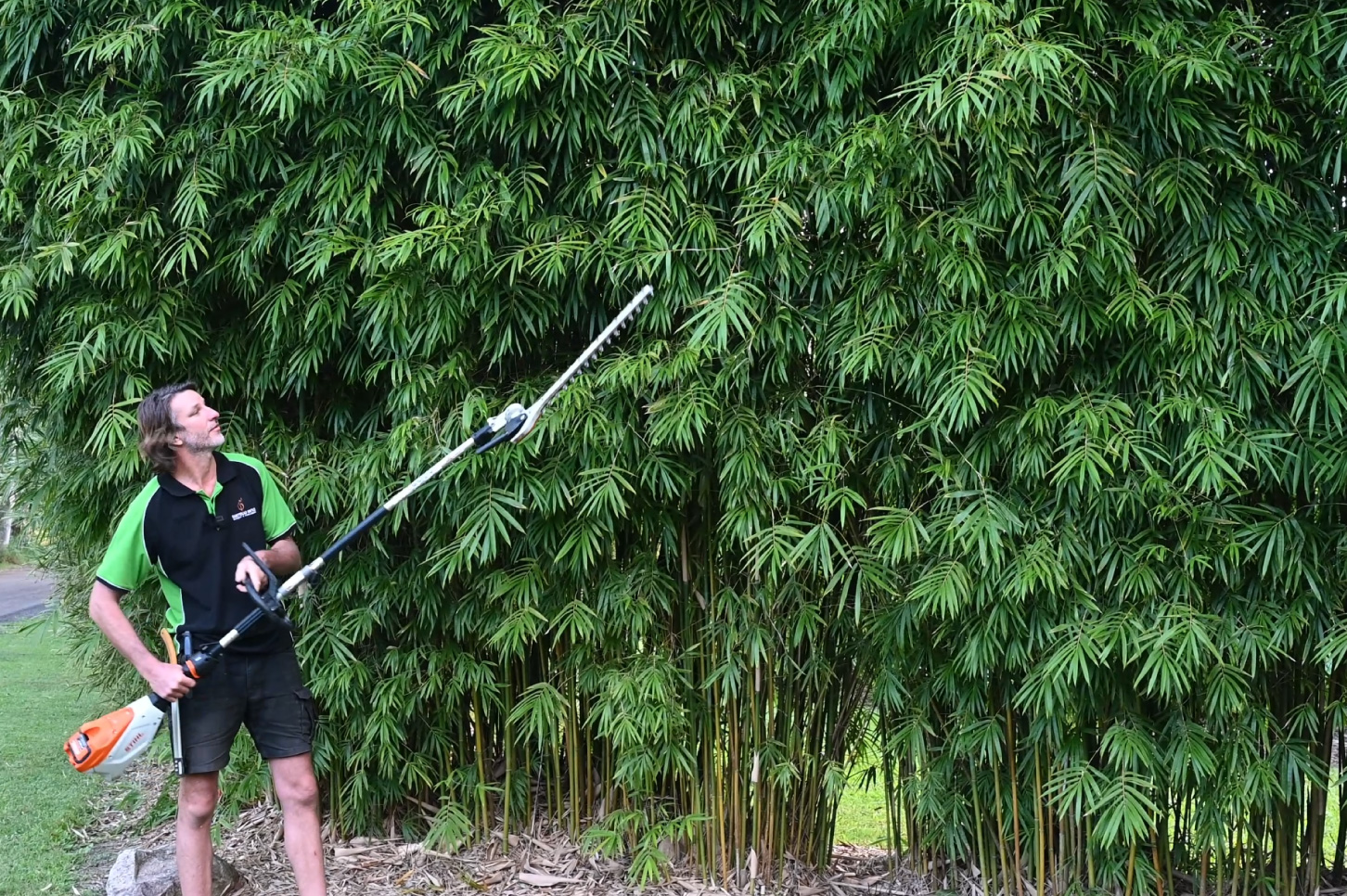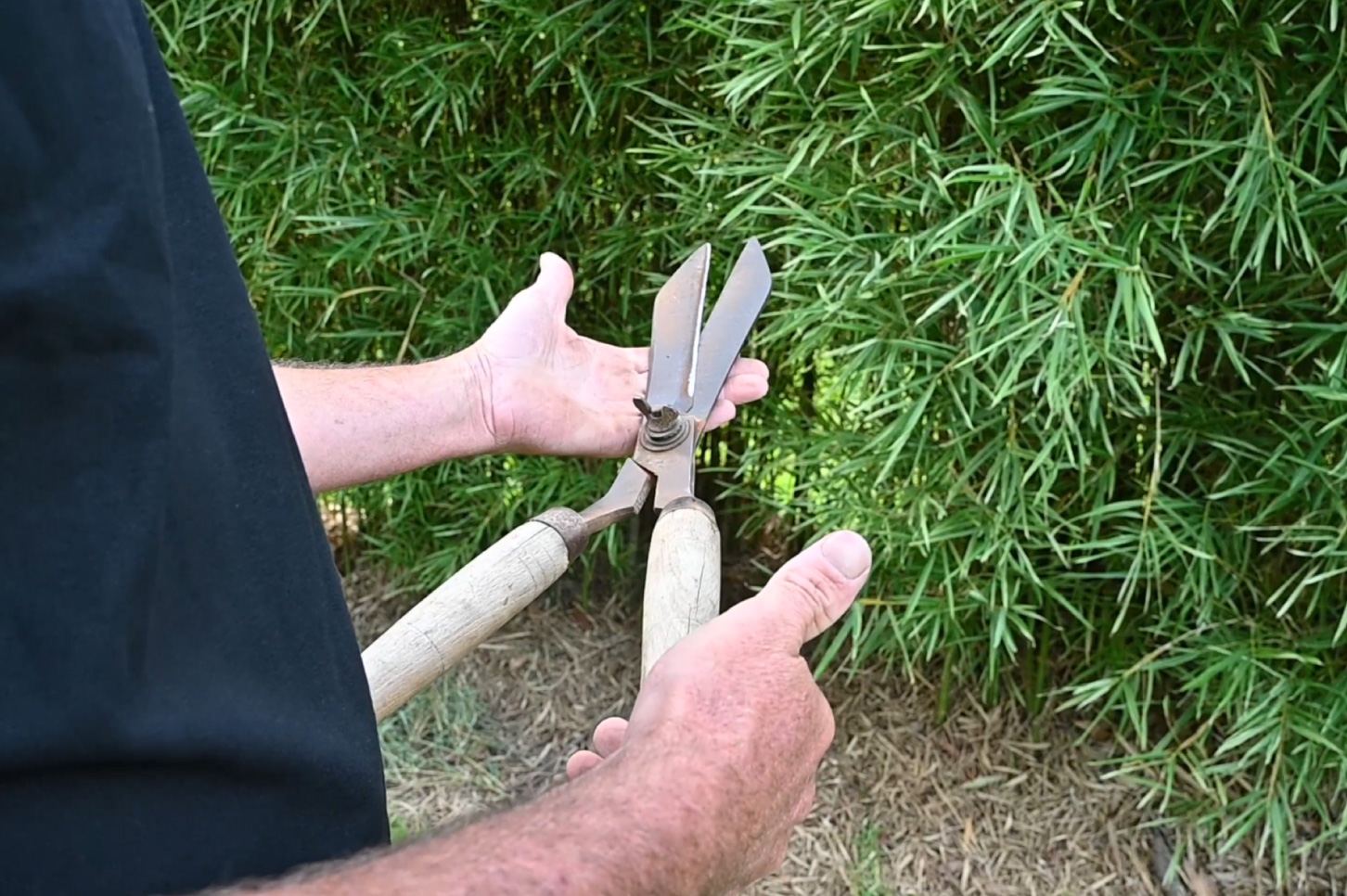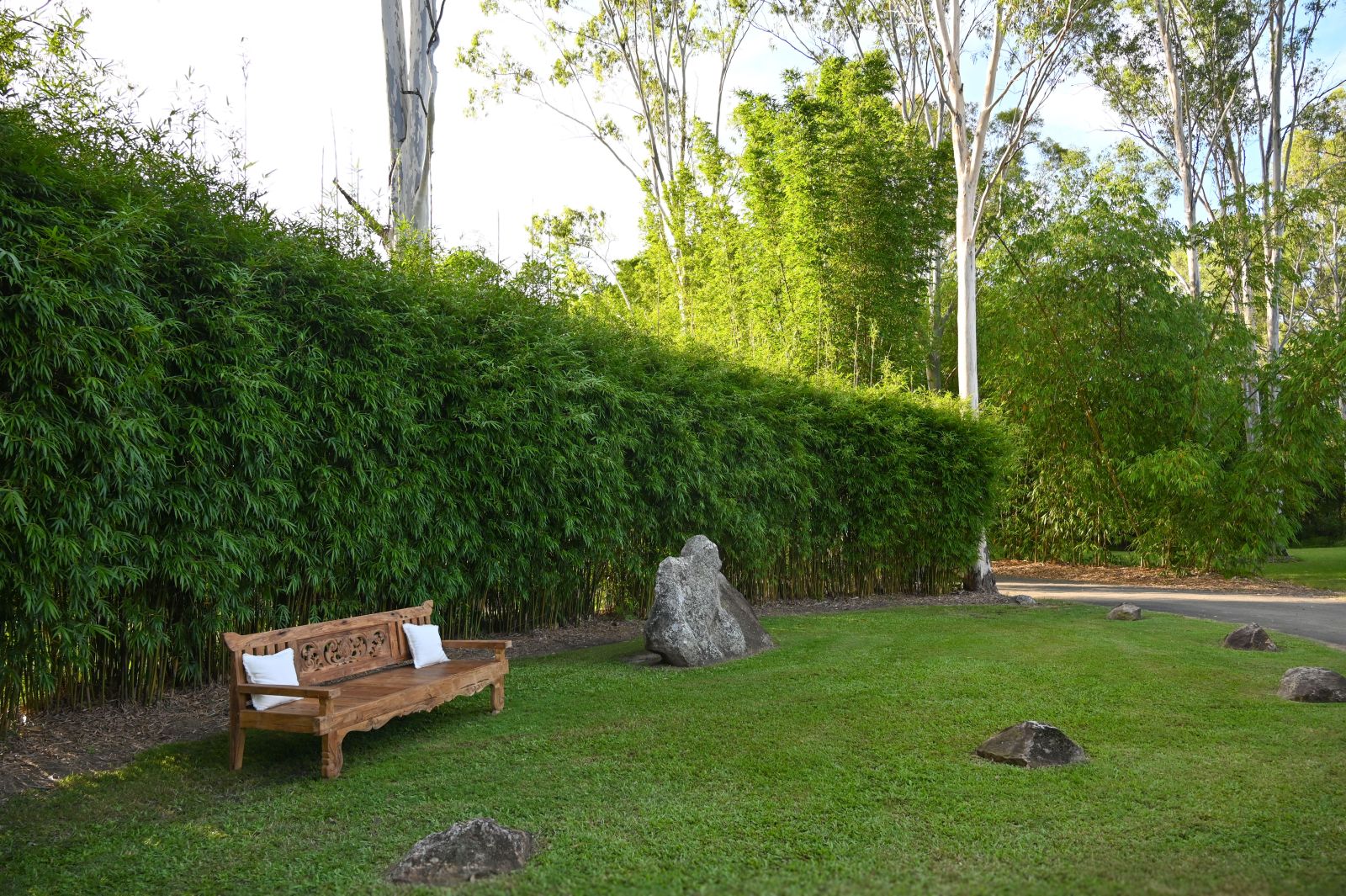How to maintain Slender Weaver Bamboo for a dense, healthy hedge
Author: Marta Hackett Date Posted:3 June 2025
One of the most in demand Bamboo species which naturally grows gracefully to become an instant hedge or privacy screen. Read all about Bambusa textilis var. Gracilis (Slender Weaver Bamboo).
Overview:
Bambusa textilis var. Gracilis (Slender Weaver Bamboo) is known in Australia as the most sought-after Bamboo species for creating elegant, instant privacy scenes and hedges. With its dependable upright growth habit, tight clumping pattern, small culm diameter and thick and lush foliage, this bamboo species is the ideal size for urban backyards, narrow walkways and could even serve as a harmonious boundary that provides a dense, green privacy screen.
Native to Southern China, this clumping bamboo thrives in our tropical, sub-tropical and even temperate climate zones across Australia. Which proves once again why it’s a favourite bamboo species among Aussies.
Compared to other bamboo species, Gracilis is considered to be low maintenance. Though, it is essential to practice regular maintenance and care to keep your bamboo hedge looking lush and shaped just how you want. In this care guide, you’ll learn our secrets that we depend on here at Bamboo Land so that you can keep your Slender Weaver Bamboo just as gorgeous as ours all year round!
Why choose Slender Weavers Bamboo:
- Upright growth habit reaching to impressive heights from 6-8 meters (two storey house)
- Culm diameter is about 3cm which makes it very easy for the backyard gardener to manage during the growth season and in winter when removing the old shoots
- Ideal for urban gardens with narrow walkways that require privacy screening
- Requires minimal upkeep when maintained well, in comparison to other bamboo species
Bambusa textilis var. Gracilis (Slender Weaver Bamboo) Care guide:
1. Watering: Establishing roots
So, you’ve just brought home your first bamboo! During the first few months after planting Slender Weaver Bamboo we recommend continuous deep watering to help the plant become established. If you’re high tech and looking to install irrigation, we recommend above ground sprinklers which will cover the entire topsoil area rather than drippers that water only the rootball. The sprinklers will encourage the roots to spread out from the rootball and help the plant to establish quicker.
Watering frequency:
For Slender Weavers Bamboo, we recommend 2 or 3 times of deep watering per week to encourage deep root development. Ensure the water penetrates the soil to a depth of at least 30cm below the surface for optimum health.
Ongoing watering care (after the first year):
Water weekly during dry periods, adjust your watering based on rainfall and soil moisture. The root system is shallow but wide spread, spreading out at least a meter from the actual clump in every direction. When watering, try to water the entire root zone, not just the centre of the clump.
Watering your bamboo is crucial to achieving an impressive, full foliage bamboo hedge, so be sure to utilise these watering tips for your bamboo screens.
2. Fertilise to encourage vibrant green foliage and reduce moisture loss through mulching
We recommend using any good quality fertiliser that has a high nitrogen content. Just like all grasses, Bamboo thrives with nitrogen rich soil. Nitrogen is an essential nutrient for bamboo as it helps your bamboo maintain its vibrant green colour, promote the resilience of the plants and can support faster culm growth. We use Rocky Point's OptiLawn here at Bamboo Land, though any fertiliser that is designed for grass or that is high in nitrogen will be perfect.
Granular nitrogen infused fertiliser should be spread on top of the soil, and then watered in. We don’t recommend placing this in the hole when planting.
Signs of low Nitrogen:
- Yellowing leaves of pale colour
- Slowed growth
Mulching:
Mulching is crucial after planting bamboo - 50 to 100mm deep. By mulching the soil around the bamboo, you're doing 3 things:
- Reducing moisture loss
- Providing organic matter to the plant (which decomposes and 'feeds' the bamboo).
- Preventing grass / weeds from growing up around the plant.
The best type of mulch is basically anything organic that can decompose to enrich the soil and thus providing the bamboo with nutrients. Some options are sugar cane mulch, wood chip, bark chip, hay or straw. Even green grass clippings will do the trick if composted a bit first, or spread thinly around the bamboo.
As the Slender Weaver Bamboo matures, it will drop some leaf litter and these leaves create the perfect natural organic mulch for your plants. Here at Bamboo Land, we rake up the fallen leaves and spread them around the base of the culms in order to reduce moisture loss. This leaf mulch provides organic matter which will decompose over time and ‘feed’ the plant.

Pruning bamboo hedge with pole shears

Pruning bamboo hedge with old hand shears
3. Pruning
How you prune will depend on your desired look of the bamboo plant or hedge. Though there are some tried and true techniques that we use here at Bamboo Land. Bamboo is best pruned during late Summer through to Winter, with thinning out of the clumps best done during winter to early Spring.
Janne recommends that you thin out your Gracilis each winter to clear the old stems. You’ll be able to tell which ones are spent as they will be pale green or brown.
Here at Bamboo Land, we use Japanese Secateurs by Tobisho which are the best secateurs you’ll ever use! These will serve you best when you are pruning the edge of your clump where access with secateurs is possible.
When you need to get in closer to the centre of the clump, it’s generally easier to use a pruning saw, especially one with a long and thin blade. Luckily we have a tried and true thin saw called the Silky Tsurugi.
4. Hedge shaping
Bambusa textilis var. Gracilis (Slender Weaver Bamboo) can be manicured easily into a perfect hedge that is low maintenance. Every year new shoots will sprout from the ground, growing up to their full height (about 6-8 metres) during Summer. Pruning the height is best done when all the new season shoots have finished growing in height and start branching out, which usually happens late Summer or early Autumn. This will ensure that the end result of the growth period results in a healthy, full hedge.
Gracilis has an elegant upright growth habit, with the leaves growing from the base to the top with beautiful consistency. If desired, side branches can be neatened up to keep the hedge more uniform. Hand shears and a ladder works well, otherwise a pole shearer works well too.
Once a year, usually during winter when there are no new shoots that risk getting damaged, is the perfect time to remove old culms (stems) from the base of the plant. Use a silky hand saw or secateurs to cut from the base, then pull the culms out.
5. Root management
Slender Weaver Bamboo is a clumping bamboo which means it forms clumps of rhizomes under the earth which grow in diameter each year. They will continuously grow wider with each passing year if there is nothing to stop the growth. The spread of the Slender Weaver Bamboo is typically about 10cm per year. So after 5 years, you would expect the clumps to be around 50cm. After 10 years, about 1m, and so on.
To prevent the natural spread of the bamboo clumps, various root barriers can be used. Root barriers need to be installed to a depth of at least 40 or 50cm. Retaining walls, concrete footings, concrete driveways can all act as effective barriers to stop the gradual spread of the bamboo.
6. Season care
Spring/Summer:
- We recommend using the OptiLawn Granular Fertiliser to encourage growth
- Undesired new shoots can be snapped or cut off close to the ground to prevent the clump expanding further than desired
Summer/Autumn:
- Trim the sides of the hedge to keep it looking uniform
- After the new shoots have reached their peak height, chop the tops off to form a uniform hedge height (if desired)
Winter:
- Thin out the clumps by removing old scrappy looking growth, by cutting spent culms off at ground level. This will ensure that your bamboo is always looking lush and healthy, with nice clean upright growth and minimal leaf litter

